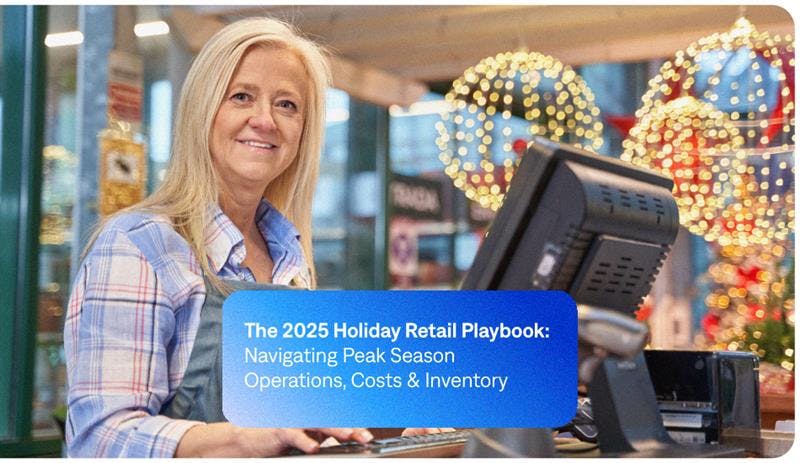Reliable labels in fresh-item grocery departments begin long before the scale lights up. Grocery scale management solutions centralize corporate control of fresh-item prices and recipe-driven label content (ingredients, nutrition, allergens) and deliver that data to in-store scale devices, where associates then weigh the product and trigger a label on a connected printer or wrapper. While that workflow is clear, grocers often still struggle with speed and visibility.
Many teams are held back by legacy batch jobs and manual workarounds like one-off automations that break when formats or paths change, software that shows only a batch number and failure alert without detail, and no simple way to re-send just to the devices that failed. The result is delayed updates, compliance risk, and hours lost during the busiest ad weeks. The good news is these issues are solvable. Here are some things to consider when assessing a grocery scale management platform.
See Problems Early, Fix Them Fast
Start with visibility. If a price or label update misses a device, corporate needs to know which device, why it missed, and how to resolve it without blanketing an entire district with another push.
Look for an alerts page that surfaces the most urgent issues the moment you log in. The system should show real-time device status across every store (online, offline, inactive, and online-inactive) so support can separate normal idling from a connectivity issue. When something goes wrong, a dedicated partial view should highlight exactly which devices missed an update and let you easily re-send only to those units, via a single click or auto-retries. Pair that with configurable auto-retries (X attempts at Y-minute intervals) and targeted notifications so routine bumps clear quietly while your team focuses on true exceptions.
Chronic trouble requires pattern recognition, not guesswork. That’s why recurring-offline tracking expressed as percent of downtime per device matters. It turns today’s “mystery drops” into tomorrow’s plan to move a unit off a weak access point, schedule service or replace failing hardware. And when a technician needs to visit a device, store-map device location removes the scavenger hunt and gets them to the right device or scale in minutes.
The result is a simpler day with fewer chainwide re-pushes, quicker restores during ad week, and less time spent chasing invisible failures.
Execute Ad-Week Changes at Warp Speed
The next test is throughput. Weekly promotions can touch thousands of items across a multitude of stores. Updates must land in minutes, not hours, and they must land across scale fleets of mixed brands.
Look for an engine designed for high-volume, parallel distribution. The multithreaded approach is a good example. It pushes large payloads quickly and isolates slow endpoints so one subnet can’t throttle the fleet. Equally important is true multi-vendor coverage from a single console across the scale brands you actually run in fresh, such as Hobart, Bizerba, DIGI, Mettler Toledo and Ishida, plus your label printers and wrapping equipment. That combination keeps you out of one-brand cul-de-sacs and preserves leverage on future hardware buys.
Finally, execution at speed needs resilience. Centralized configuration and store-and-forward behavior make sure brief outages don’t derail a chainwide update and that completions are verified when devices reconnect.
Put together, these capabilities turn ad week into a routine push instead of a fire drill.
Protect Pricing Integrity and Stay Audit-Ready
Put governance first to protect pricing and simplify audits. The most effective solutions enforce corporate-only control of pricing and content and disable on-device edits in stores. That single choice protects margin by blocking “sweethearting” favoritism pricing and in-store human error, and keeps every department aligned to what headquarters approved.
From there, product label accuracy is a non-negotiable requirement for fresh and store-prepared foods to facilitate operational efficiency, legal compliance and consumer decision making. Your connected devices must output labels that reflect the approved item/recipe source including ingredients, nutrition and major allergens, with correct weights and pricing, using version-controlled templates (with bilingual or QR variants where needed). This is the practical way to meet the FDA Food Code model that underpins retail food safety and honest presentation as well as other FDA, USDA or EU regulatory mandates.
The Bottom Line
“Grocery scale management” may sound tactical, but for deli, meat, bakery, produce prep, taqueria, creamery and other fresh departments, it is a strategic control point. The solution you choose should enable corporate teams to see and fix issues early, quickly execute changes, and lock down governance without adding work in stores. In practice, that means capabilities like alert tiles and real-time status, a partial view to instantly locate devices that failed to update that also includes a one-click re-send and auto-retries, recurring-offline detection, map-level device location that includes online status, multithreaded distribution across all your brands, recipe-true label data to connected devices, and an audit trail that answers questions in minutes. With the right solution, you’ll streamline processes, save time and gain visibility. Ad weeks get calmer, audits are easier, and fresh-department operations become smoother.
Recent Posts
UK Retail Budget 2025: What Retailers Need to Respond to Now
2025-12-02
The 2025 UK Budget is reshaping retail economics. Rising labour costs, higher rates, tighter margins—here's what retail leaders must prioritize now.
Read More
The 2025 Holiday Retail Playbook: Navigating Peak Season Operations, Costs & Inventory
2025-11-18
Fewer staff, higher costs, earlier shopping peaks—2025 holiday retail is different. Get strategies for staffing, inventory, and customer satisfaction to win this season.
Read More
The Hidden Cost of Invisible Safety: Why C-Store Food Programs Are Leaving Money on the Table
2025-11-10
56% of customers avoid C-Store Food Programs due to safety concerns. Learn how automated visibility systems turn compliance into a $3.2B revenue opportunity.
Read More

